Stats Explained - Path of Exile
Your Path of Exile character’s stats is primarily built from a combination of the following:
- Passive skills
- Skill gems
- Items
Both the passive tree and the items can seem overwhelming at first, so in this tutorial we will explain some of the basics.
1. The Passive Tree Stats
The most important thing to know is how the passive tree interacts with your character. In general, passive skills affect all the relevant stats on your character, regardless of where they come from. We call these global modifiers.
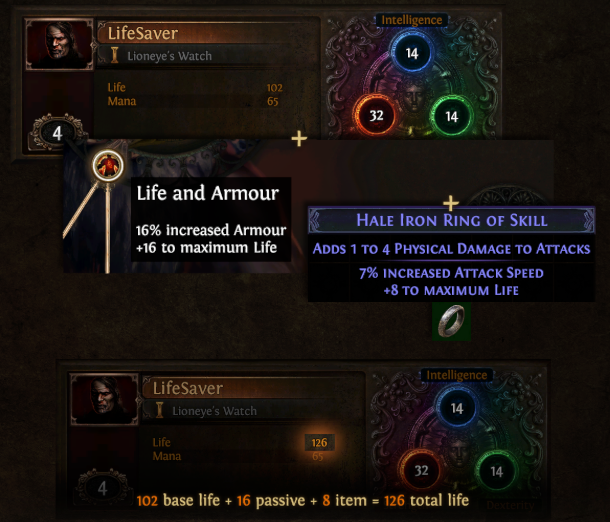
This character has been granted life from their Iron Ring, as well as from their first passive skill. They also gained life simply by levelling up.
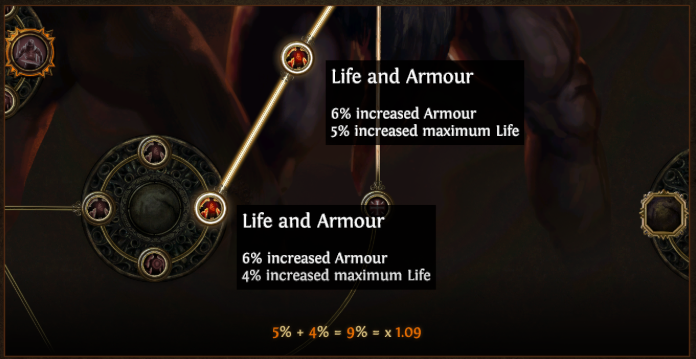
By taking these two passive skills, this character also gains 4% and 5% increased maximum life. These add to a total of 9% increased maximum life.
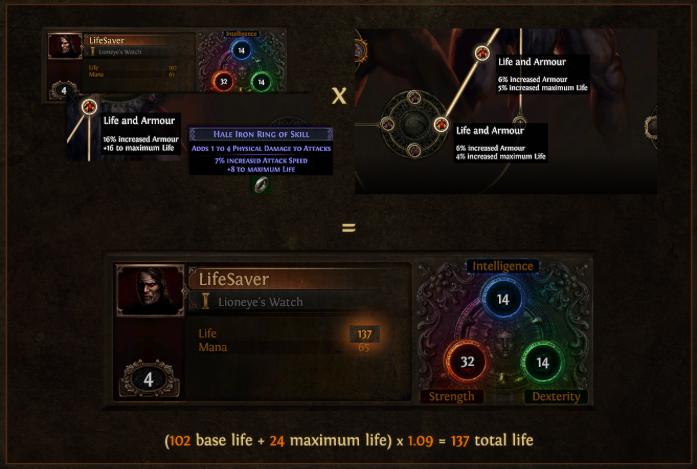
The global modifier (increased maximum life) increases all sources of maximum life, and after rounding, we land on this character’s final life value.
In the example above, we see that the ‘increased maximum life’ passives add together before they affect the character’s life. Most passive skills, especially any that use the word ‘increased’, act this way.
Buy PoE Currency Cheap
- Divine Orbs for Sale (6% off coupon: vhpg). Best site to buy PoE currency.
- Buy PoE Currency Instant Delivery (6% off coupon: poeitems). Path of Exile item and currency. Payment: PayPal, Skrill, Cryptocurrencies.
2. ‘More’ and ‘Less’ Stats
Passives that specifically say they grant ‘more’ or ‘less’ of something are the exceptions to the above rule. These are applied after all of the increases, acting like multipliers. Unlike passives which increase something, passives which provide ‘more’ or ‘less’ of something never add together and instead each apply their multiplicative effect separately. These terms appear on Keystones in the passive skill tree, but are most commonly seen on support gems.
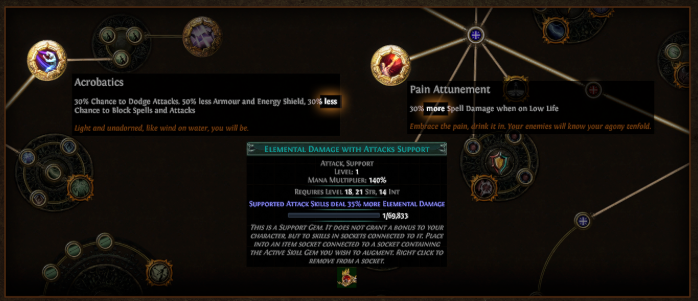
3. Global VS Local Stats
Item mods tend to come in two varieties: ‘global mods’, which act like the passive skills, and ‘local mods’, which affect the item itself. Compare the weapons below, and note that the magic weapon (on the right) has ‘Increased Physical Damage’. You’ll see that the weapon’s Physical Damage is higher, and is a different colour. It is this number that is used when other modifiers, such as your passive skills, are used to calculate how much damage your attacks deal.
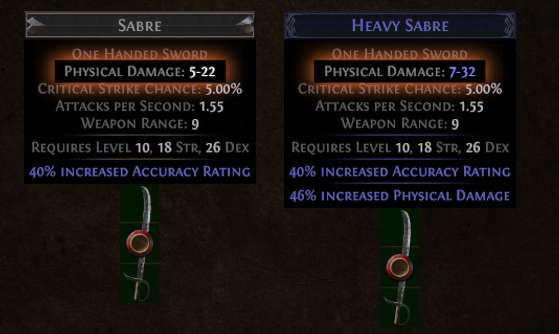
The same is true for increases to armour on items that naturally provide armour, or increases to evasion on items that naturally provide evasion, and so on.
Some mods, such as ‘Increased Attack Speed’, can appear on both weapons and armour. Like the Increased Physical Damage modifier, the Increased Attack Speed on the weapon shown below is local to the weapon, and changes that specific weapon’s rate of attack. The gloves shown below also have Increased Attack Speed, but they affect any weapon you are holding and use the Attacks Per Second value displayed on the weapon to calculate how quickly you attack.
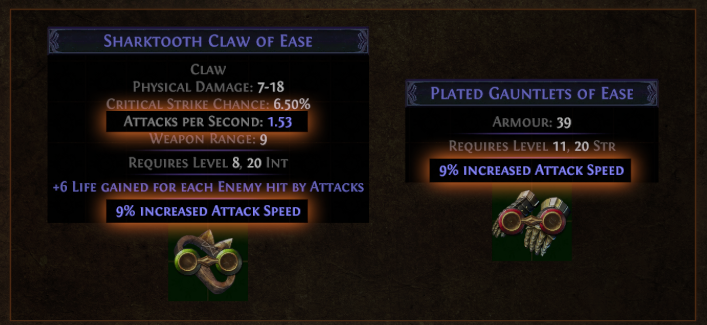
The attack speed mod on these gloves is a global modifier, so it adds together with other global increases to attack speed, including those on your passive tree.
As a general rule (though there are occasional exceptions), if the values in the top section of an item are different to the normal basetype, they are benefitting from local modifiers. If a modifier on an item doesn’t seem to be affecting anything in the top section, then it is global. See if you can work out which mods are local and which mods are global in the image below.
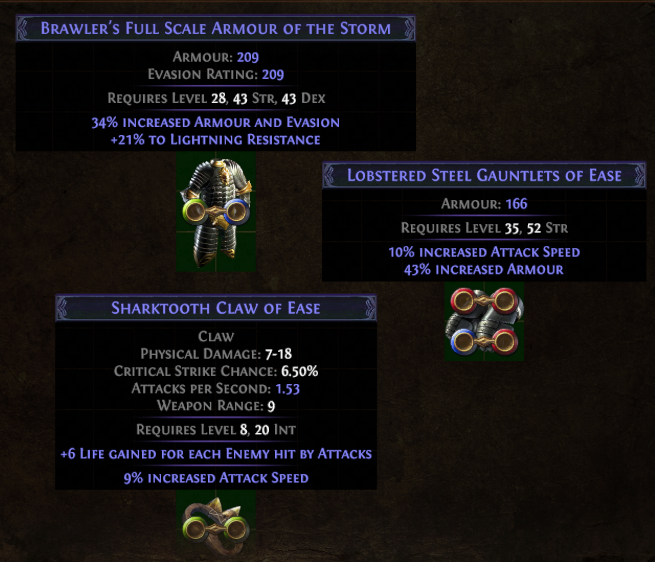
The Full Scale Armour has one local mod (increased Armour and Evasion) and one global mod (Lightning Resistance). The Steel Gauntlets also have one local mod (increased Armour) and one global mod (increased Attack Speed). The Sharktooth Claw’s increased Attack Speed mod is local, and so is the implicit (life gained on hit).
4. Stats to look for
Character builds in Path of Exile are extremely varied, and which items and passives are important to a character is highly dependent on what that character is trying to achieve, but there are some things almost everyone should look out for.
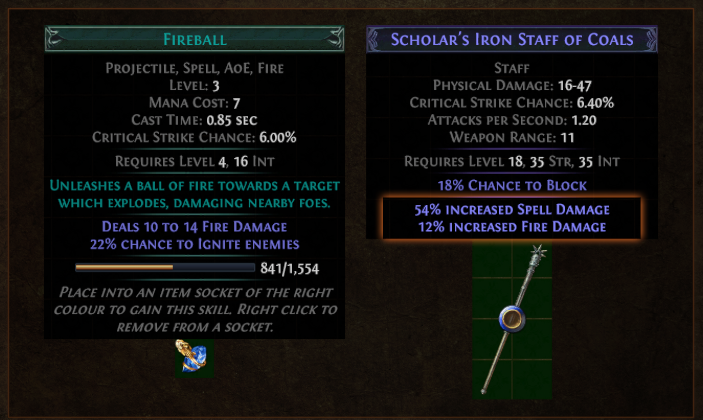
Because of the properties of ![]() Fireball, this staff increases
Fireball, this staff increases ![]() Fireball’s damage by 66%.
Fireball’s damage by 66%.
5. Dealing Damage
Unless you’re in a coordinated group, every character needs a way to kill monsters. Figure out how you plan to deliver damage and look for items that amplify that.
If you plan to shoot arrows at monsters from afar, a high-damage bow, as well as passive skills that benefit your chosen weapon, are a must. If you plan to cast spells, look for weapons with ‘increased Spell Damage’. If you’re strictly dealing fire damage, look for things that boost your fire damage. A fire spell like ![]() Fireball benefits from increases to fire, spell, and projectile damage. A character who wants to smash things with a one-handed mace should look for modifiers to one-handed weapons, maces, attacks and melee attacks specifically.
Fireball benefits from increases to fire, spell, and projectile damage. A character who wants to smash things with a one-handed mace should look for modifiers to one-handed weapons, maces, attacks and melee attacks specifically.
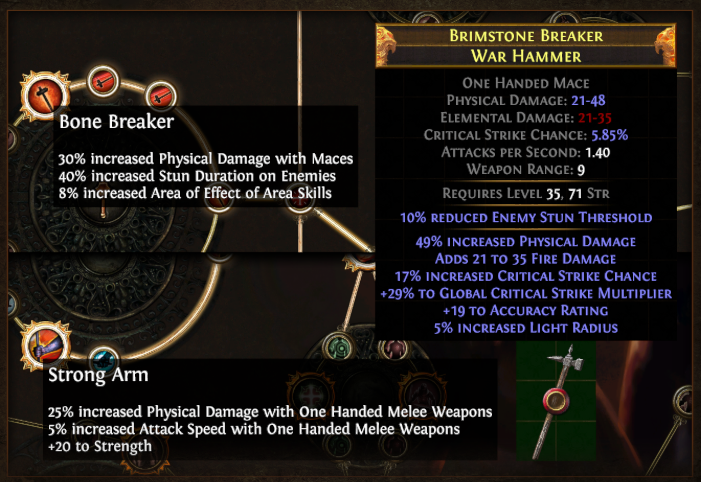
Weapon-specific passives are often stronger than more generalised passives, but you lose some flexibility in which items you can use.
6. Stats Builds Defence
You can’t kill monsters if you’re dead, so you should also carefully consider your defences. Most characters will want some armour, energy shield or evasion, or some combination of the three. Sources of life and increases to it are a great way to extend your lifespan, but you’ll also want to seek out ways to mitigate the damage before it ever touches your life pool.
Fire damage, such as the fire from a cannibal’s thrown torch, can be mitigated by sources of ‘Fire Resistance’. Merveil’s spells deal cold damage, so ‘Cold Resistance’ is very useful against her. If a certain spell or attack deals significantly more damage to you than anything else, it might be of an element that you don’t have much resistance to. If you’re ever unsure where you spend your next passive point, it’s almost always worth investing in a relevant defence.
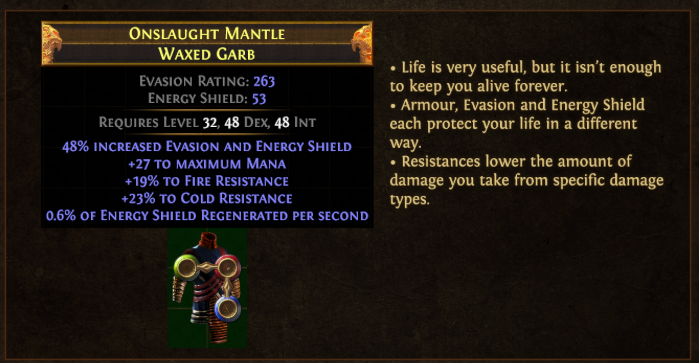
Not too shabby! As you progress, you’ll be able to fill some gaps using the crafting benches given to you by characters called Forsaken Masters.
Path of Exile Guides & Tips
- Crest of Ezomyr PoE Heist Target 3.12
- Buy Cheap Bulk OSRS Gold
- The Effigon Prophecy – Blind Faith PoE
- Large Mana Flask PoE Recipe Vendor
- PoE Divination Cards by Map, Divination Card Farming, Drop Locations List
- Anomalous Frostbite PoE
- Geofri’s Devotion Prophecy – Black Devotion PoE
- Divergent Blast Rain PoE
- Lifeforce Bud 3.11 – PoE Seed Enhancer Harvest
- Geofri’s Baptism Prophecy – Baptism by Death PoE
- Contract: Bunker PoE Heist 3.12
- Anomalous Brand Recall PoE
- Belly of the Beast PoE: Price, Farming, Drop, Prophecy, Divination Card
- Divergent Viper Strike PoE
- Thread of Hope PoE – Crimson Jewel